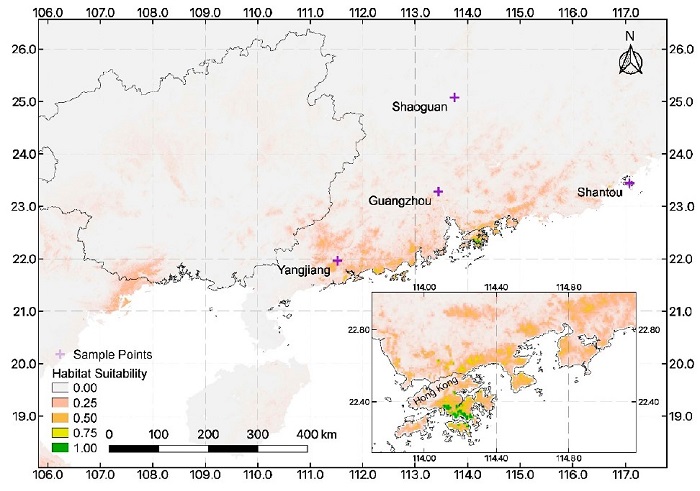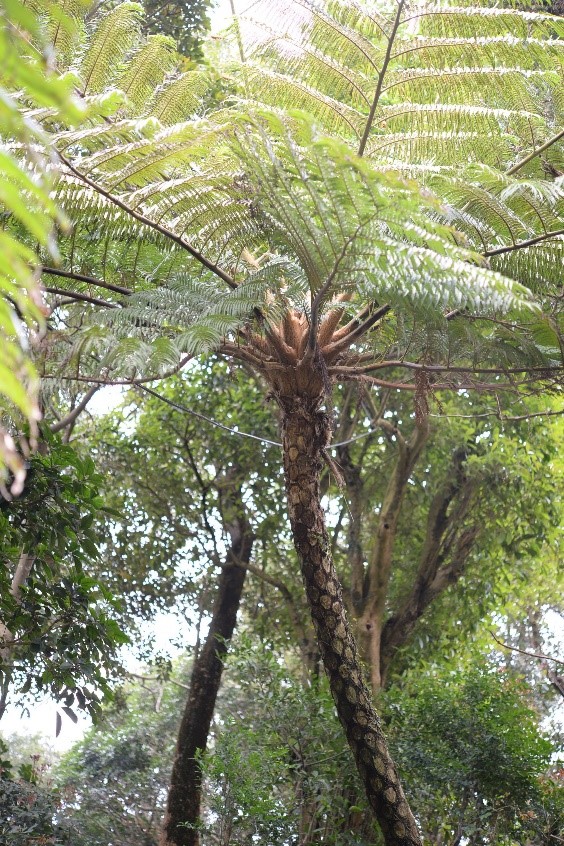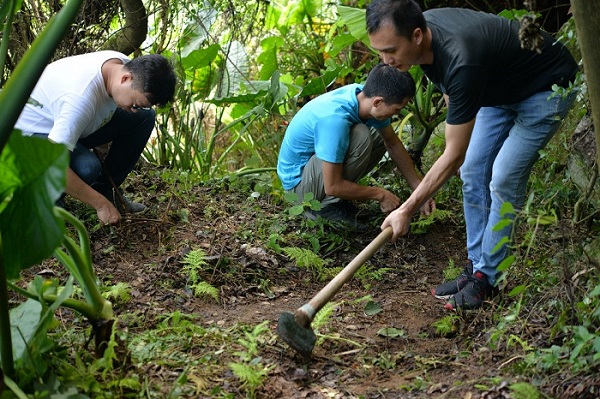New research progress on conservation of rare tree fern Sphaeropteris lepifera
Sphaeropteris lepifera, a tree fern belonging to the family Cyatheaceae, is valued medicinally and horticulturally. Despite its present conservation status, this fern represents an ancient lineage that originated ca. 300 million years ago, became relatively widespread, and, later, underwent extinctions leading to its present restricted distributional range. Thus, it has survived and multiplied since the Mesozoic time period. Within China, S. lepifera is primarily distributed in Taiwan, but a few wild populations have been found in coastal areas of mainland China, such as in Zhejiang, Guangdong and Guangxi, including on near-shore islands, like Hainan. Moreover, the species has also been discovered in Japan (Ryukyu Islands) and the Philippines, where it is likely to be native.
Xueying Wei, AJ Harris and Yuwen Cui et al. of South China Botanical Garden (SCBG), Chinese Academy of Sciences (CAS) carried out field investigation and spore breeding of wild S. lepifera, tried to reintroduce artificially bred fiddleheads near the native environment such as Nan'ao County of Shantou City in Guangdong Province. Based on the suitability distribution results of maximum entropy (MaxEnt) model and the field investigation results of the original habitat, several sites with appropriate climatic conditions are selected for S. lepifera reintroduction. At present, about half of the individuals survived and grows well, and several field distribution sites of S. lepifera have been successfully added.
Based on fieldwork, ecological niche modeling, and regression approaches, we combined these data with the characterization of spore germination and gametophytic development in the laboratory to assess the reasons why S. lepifera is endangered and to propose a conservation strategy that focuses on suitable sites for reintroduction and accounts for the ecology and biphasic life cycle of the species. Our ecological niche models indicated that cold temperature extremes, temperature stability over long- and short-terms, and the seasonality of precipitation were among the most important abiotic environmental factors affecting the distribution of S. lepifera among the variables that we measured.
Additionally, we observed that slope aspect, specifically south-facing slopes, facilitates more incoming sunlight for mature trees, and simultaneously, provides greater, much-needed shade for fiddleheads on account of the canopy being denser. This study can provide important guidance on the restoration of S. lepifera in the wild. It is expected that the wild population can be effectively protected and restored through the combination of in-situ protection and population regression.
Relevant research results were published in Horticulturae with title “Inferring the Potential Geographic Distribution and Reasons for the Endangered Status of the Tree Fern, Sphaeropteris lepifera, in Lingnan, China Using a Small Sample Size” recently (www.mdpi.com/2311-7524/7/11/496). Xueying Wei and AJ Harris are co-first authors, and Faguo Wang is the corresponding author of this paper. This work was funded by grants from the Guangdong Province Enterprise Science and Technology Special Commissioner Project, Guangdong Wildlife Protection and Management Project and Agricultural Biodiversity Investigation and Protection Technology System Construction Project.



File Download: